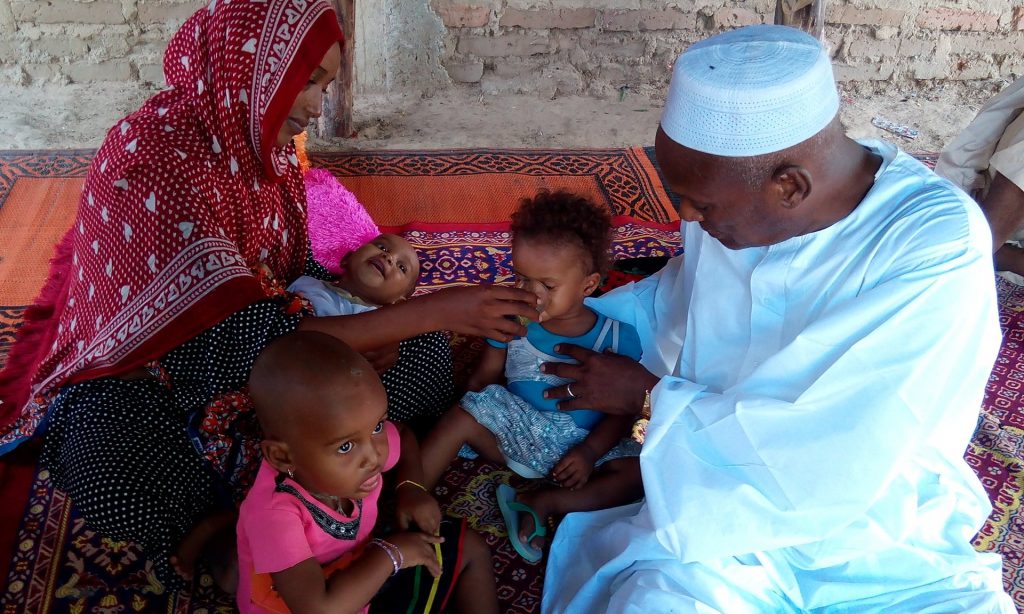A project that has cut death rates, reduced outbreaks and strengthened fragile health systems in Africa’s Sahel region by distributing anti-malaria drugs to millions of vulnerable children is facing a supply chain bottleneck, say health officials and experts.
The innovative Access-SMC project, funded by Unitaid and run by the Malaria Consortium in partnership with Catholic Relief Services, involves scaling up the use of seasonal malaria drugs to children under five in seven countries along the arid belt of land that fringes the Sahara.
The $67m (£45m), three-year project aims to deliver 45m treatments to about 10 million children by next year – and eventually up to 25 million children in the Sahel could benefit. Clinical trials have shown that the intervention can reduce the number of children falling sick or dying from malaria by 75%.
The treatment consists of up to four monthly doses. Each month, community health workers deliver the first dose before parents administer the next ones. Town criers and radios educate people about the scheme.
“This is massive, because a majority of these kids would have had malaria. So already we are talking about millions of children not having malaria, or not as severe malaria as they would have had before,” said Diego Moroso, Access-SMC’s project director.

Photograph: Malaria Consortium
“I asked a mother in Chad how things were going and she said, ‘I can sleep this season’. I was thinking about the kids but it’s actually about her health also because she doesn’t have to take care of three or four kids who used to get sick a couple of times every month. That’s such a heavy burden.”
Moroso was speaking on the sidelines of a symposium held in London to evaluate progress in scaling up the intervention. Last year, 3.2 million children received the drugs; the project hopes to reach more than 6 million this year.
“It’s fairly inexpensive, it’s concentrated in a specific amount of time, it’s easily planned, it’s easily delivered with the right resources. When we look at Nigeria, for instance, even with $40m per year, we could have 11 million children treated,” Moroso said.
Nigeria accounts for more than 25% of malaria deaths in Africa and, despite a recent drop in the prevalence rate from 42% of children under five in 2010 to 27% in 2014, the burden remains high during the short rainy season from July to October, according to health minister Dr Osagie Ehanire.
He said the intervention has more than halved malaria deaths in children under five in the areas where it was implemented, and this translated into wider benefits.
“There are less out-of-pocket expenses for the families involved, they can use the money for other activities. There is an improvement in school attendance. Parents can go to their work, go to the fields and don’t have to tend small children,” he said.
Distributing the drugs remains challenging, although things have become easier, he said, thanks to military gains against Boko Haram insurgents since President Muhammadu Buhari took office last year.
“Up to a year ago, 14 local governments were under the control of Boko Haram, and were totally inaccessible,” Ehanire said. “[Now] all 14 local governments have been set free.”
Officials hope the project can be combined with other initiatives: health workers travelling to remote areas to administer malaria drugs could also distribute vitamins, measure children for malnutrition, or administer vaccines.
Ehanire said Nigeria hoped to integrate the initiative into its universal health coverage.
“International partners could do very well to assist us in this drive, to work with the ministry of health … and make technical and financial contributions,” he said.

Photograph: Malaria Consortium
The main challenge is guaranteeing the supply of drugs, given that there is no private market and only one main manufacturer, Guilin, Moroso said.
“Orders need to be timely and funding needs to be pledged and confirmed in time,” he said.
“There were 71m funded treatments this year, [but] the manufacturer will only be able to produce 67m due to capacity constraints. We want to try to change that with better planning,” he said, adding that they are also hoping to persuade another company to manufacture the drugs.
SMC is also being used in Burkina Faso where, according to Dr Yacouba Savadogo, director of the National Malaria Control Programme, malaria accounts for about half of doctor visits and 30% of deaths in health centres.
“It is particularly widespread among the most vulnerable, notably in the rural population and in farmers, and that is around 90% of the population. Studies show that 40% of these people’s revenues are lost because of malaria,” he said.
“In 2015, we have seen a reduction of 25% of the illness in the zones where SMC was carried out,” he added, although he noted that ensuring parents administer the drugs effectively remains a challenge.
Another difficulty is funding, even though the government has secured a loan from the World Bank.
“In 2016, we wanted to cover 70 districts, but we only had money for 56. So there are 14 districts that are not covered at a cost of around $1.6m. It’s not much, but it is missing,” Savadogo said.

